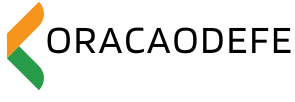Personal finance might feel overwhelming, but it doesn’t have to be. Building wealth and achieving financial freedom is a journey that starts with understanding the basics and taking consistent action. Whether you’re drowning in debt, living paycheck to paycheck, or looking to optimize your existing financial strategy, the principles remain the same.
Financial freedom means having enough savings, investments, and cash flow to live the life you want without being stressed about money. It’s about making your money work for you rather than working for your money. This comprehensive guide will walk you through the essential steps to master your personal finances and set yourself up for long-term financial success.
Setting Financial Goals
Before you can build wealth, you need to know what you’re building toward. Setting clear financial goals provides direction and motivation for your money decisions. Without specific targets, it’s easy to spend mindlessly and wonder where your money went.
The most effective approach is using SMART goals—Specific, Measurable, Achievable, Relevant, and Time-bound. Instead of saying “I want to save money,” a SMART goal would be “I want to save $10,000 for an emergency fund within 18 months.” This goal is specific ($10,000), measurable (you can track progress), achievable (with proper budgeting), relevant to your financial security, and time-bound (18 months).
Start by categorizing your goals into short-term (1 year or less), medium-term (1-5 years), and long-term (5+ years). Short-term goals might include building an emergency fund or paying off credit card debt. Medium-term goals could involve saving for a house down payment or a new car. Long-term goals typically focus on retirement savings or your children’s education.
Write down your goals and review them regularly. Studies show that people who write down their goals are 42% more likely to achieve them. Make your goals visible—put them on your bathroom mirror, computer screen, or anywhere you’ll see them daily.
Creating a Budget
A budget is your financial roadmap. It tells your money where to go instead of wondering where it went. Creating and sticking to a budget is the foundation of financial success, yet many people avoid it because they think it’s restrictive. The truth is, a budget actually gives you more freedom by ensuring you can afford the things that matter most to you.
The 50/30/20 rule is a popular budgeting framework that’s simple to implement. Allocate 50% of your after-tax income to needs (housing, utilities, groceries, minimum debt payments), 30% to wants (entertainment, dining out, hobbies), and 20% to savings and debt repayment.
This rule provides a starting point, but you might need to adjust based on your situation. If you have high-interest debt, consider increasing the savings/debt category to 25% or 30% temporarily. If you live in a high-cost area, your needs might exceed 50%, requiring adjustments to other categories.
Track your spending for at least a month before creating your budget. Use apps like Mint, YNAB (You Need A Budget), or even a simple spreadsheet. Understanding where your money currently goes helps you make informed decisions about where you want it to go.
Zero-based budgeting is another effective approach where you assign every dollar a job. Your income minus expenses should equal zero, meaning you’ve allocated all your money to specific categories including savings and investments.
Saving and Investing
Saving and investing are both crucial for building wealth, but they serve different purposes. Savings provide security and liquidity for short-term needs and emergencies. Investments help your money grow over time and build long-term wealth.
Start with building an emergency fund of 3-6 months of expenses in a high-yield savings account. This fund protects you from going into debt when unexpected expenses arise. Once you have this safety net, you can focus more aggressively on investing.
Investing allows your money to grow through compound interest—earning returns on your returns. The earlier you start, the more time your money has to compound. Even small amounts invested regularly can grow substantially over time.
Consider these investment options based on your risk tolerance and time horizon:
Stocks offer the highest potential returns but come with higher volatility. They’re suitable for long-term goals when you can ride out market fluctuations. Index funds and ETFs provide diversification by investing in hundreds or thousands of stocks.
Bonds are generally less risky than stocks but offer lower returns. They provide steady income and help balance a portfolio. Government bonds are considered the safest, while corporate bonds offer higher yields with slightly more risk.
Mutual funds pool money from many investors to buy a diversified portfolio of stocks, bonds, or other securities. They’re professionally managed but come with fees that can eat into returns.
Real estate can provide both income and appreciation. Real Estate Investment Trusts (REITs) allow you to invest in real estate without owning physical property.
Start investing as early as possible, even if it’s just $50 per month. Consistency matters more than the amount when you’re beginning. Take advantage of employer 401(k) matches—it’s free money that can significantly boost your retirement savings.
Managing Debt
Debt can be a major obstacle to building wealth, especially high-interest debt like credit cards. Managing and eliminating debt should be a priority in your financial plan.
List all your debts including balances, interest rates, and minimum payments. This gives you a clear picture of what you owe and helps you prioritize which debts to tackle first.
Two popular debt repayment strategies are the debt snowball and debt avalanche methods. The debt snowball focuses on paying off the smallest balances first while making minimum payments on others. This approach provides psychological wins that can motivate you to continue. The debt avalanche method targets the highest interest rate debts first, which saves more money in interest over time.
Consider debt consolidation if you have multiple high-interest debts. A personal loan or balance transfer credit card with a lower interest rate can simplify payments and reduce interest costs. However, be careful not to run up new debt on the cards you’ve paid off.
Avoid taking on new debt while paying off existing debt. This might mean making sacrifices in the short term, but it accelerates your path to financial freedom. Focus on increasing your income or reducing expenses to put more money toward debt repayment.
Monitoring and Adjusting Your Financial Plan
Your financial plan isn’t a set-it-and-forget-it document. Life changes, and your financial plan should adapt accordingly. Regular monitoring helps you stay on track and make necessary adjustments.
Review your budget monthly to see if you’re sticking to your planned spending. Look for patterns—are you consistently overspending in certain categories? Are there areas where you’re spending less than budgeted?
Conduct a comprehensive financial review quarterly. Check your progress toward goals, review investment performance, and assess whether your strategy is working. Annual reviews should include updating your goals, evaluating your risk tolerance, and rebalancing your investment portfolio.
Life events like marriage, divorce, job changes, or having children require immediate plan adjustments. Your financial priorities and capacity will change, and your plan should reflect these changes.
Investment Options Comparison
|
Investment Type |
Risk Level |
Expected Return |
Liquidity |
Best For |
|---|---|---|---|---|
|
Savings Account |
Very Low |
1-2% |
Very High |
Emergency fund |
|
CDs |
Low |
2-4% |
Low |
Short-term goals |
|
Bonds |
Low-Medium |
3-6% |
Medium |
Income, stability |
|
Index Funds |
Medium |
6-10% |
High |
Long-term growth |
|
Individual Stocks |
High |
8-12% |
High |
Growth, higher risk tolerance |
|
Real Estate |
Medium-High |
6-12% |
Low |
Diversification, income |
Frequently Asked Questions
Q: How often should I review my budget?
A: Review your budget monthly to track spending and make minor adjustments. Conduct a more thorough review quarterly to assess progress toward goals and make strategic changes. Annual reviews should include updating goals and evaluating your overall financial strategy.
Q: What is the best way to start investing?
A: Start with your employer’s 401(k) if available, especially if there’s a company match. Then consider opening an IRA and investing in low-cost index funds. Begin with small, consistent amounts and gradually increase as you become more comfortable and knowledgeable about investing.
Q: How can I improve my credit score?
A: Pay all bills on time, keep credit utilization below 30% of available credit, avoid closing old credit cards, and monitor your credit report for errors. Pay down existing debt and avoid opening new credit accounts unnecessarily. Building good credit takes time, so be patient and consistent.
Q: Should I pay off debt or invest first?
A: Pay off high-interest debt (typically anything above 6-8% interest) before investing. However, if your employer offers a 401(k) match, contribute enough to get the full match even while paying off debt—it’s free money with an immediate 100% return.
Q: How much should I save for retirement?
A: Aim to save 10-15% of your income for retirement, including employer contributions. If you start saving later in life, you may need to save 20% or more. The key is to start as early as possible and take advantage of compound growth.
Taking Control of Your Financial Future
Building wealth and achieving financial freedom isn’t about making perfect decisions—it’s about making consistent, informed choices that align with your goals. The steps outlined in this guide provide a framework for taking control of your finances, but remember that everyone’s situation is unique.
Start where you are, use what you have, and do what you can. Small steps taken consistently lead to significant results over time. Set up automatic transfers to your savings and investment accounts to make the process easier. Educate yourself continuously about personal finance through books, podcasts, and reputable financial websites.
The journey to financial freedom requires patience, discipline, and persistence. There will be setbacks and challenges, but staying focused on your goals and maintaining good financial habits will get you there. Your future self will thank you for the steps you take today.
Remember, the best time to start was yesterday. The second-best time is now. Take action today, even if it’s just creating your first budget or setting up that emergency fund. Your path to financial freedom starts with a single step.
References
- U.S. Bureau of Labor Statistics. “Consumer Expenditure Survey.” https://www.bls.gov/cex/
- Federal Reserve. “Report on the Economic Well-Being of U.S. Households.” https://www.federalreserve.gov/consumerscommunities/shed.htm
- Securities and Exchange Commission. “Investor.gov.” https://www.investor.gov/

